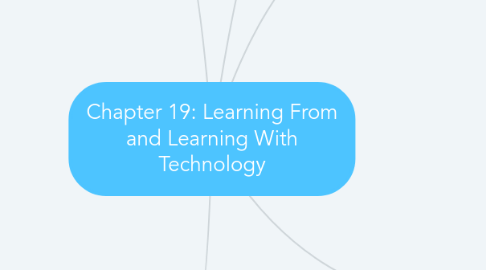
1. Teachers' Use of Technology Affects How Students Use Teechnology
1.1. Teachers must be willing and able to incorporate technology purposefully
1.2. Professional Development is integral to technology integration
1.3. 3 Factors that are essential to teachers integration of technology
1.3.1. 1. Administrative and Technical Support
1.3.2. 2. Adequate Resources
1.3.3. 3. Teacher Leadership to advocate for, demonstrate, and evaluate technology
2. What technology skills do students need?
2.1. 21st Century Learning Skills
2.1.1. Basic Compentency in Core Subjects
2.1.2. Integrate 21st Century Interdisciplinary Themes
2.2. Develop Soft Skills
2.2.1. Flexibility
2.2.2. Initiative
2.2.3. Adaptibility
2.2.4. Self Direction
2.3. International Society for Technology in Education
2.3.1. Emphasis on differentiation to accommodate different skill levels and learning styles
2.3.2. Above Level Content
2.3.3. Explicit Teaching of Creative and Critical Thinking Skills
2.3.4. "Big Ideas"
2.3.5. Authentic Methodologies and Products
3. Learners Today and Technology
3.1. Major shift in technology with release of iPhone in 2007
3.1.1. Single Device Combined Multiple Functions
3.1.2. Led to Educators Integrating Technology
3.2. Students see technology as an integral part of their lives
3.3. BYOT: Bring Your Own Technology Practices
4. Technology Evolution in Education
4.1. 3 Stages
4.1.1. Stage 1: Learning FROM Technology
4.1.1.1. Technology is used to teach or remediate basic skills
4.1.2. Stages 2 & 3: Learning WITH Technology
4.1.2.1. Active participants in the learning process
5. Using Technology Skills to Enhance Learning
5.1. Technology as an Information Resource
5.1.1. New Literacies
5.1.2. Creating Conceptual Space
5.2. Technology as an Interactive Learning Tool
5.2.1. Digital Game Based Learning
5.2.2. Online Gifted Programs
5.2.3. Flipped Classrooms
5.3. Technology as a Communication Tool
5.3.1. Video Conferencing
5.3.2. Online Publishing
5.3.3. Telementoring
5.4. Technology as a Production Tool
5.4.1. Productivity Tools and Cloud Computing
5.4.2. Video and Sound Editing
5.4.3. Programming
5.5. Tools for Classroom Instruction and Interaction
5.5.1. Chalk Alternatives
5.5.2. Assistive Technology
5.5.3. Podcasting
5.5.4. E-Books
5.5.5. Assessment
